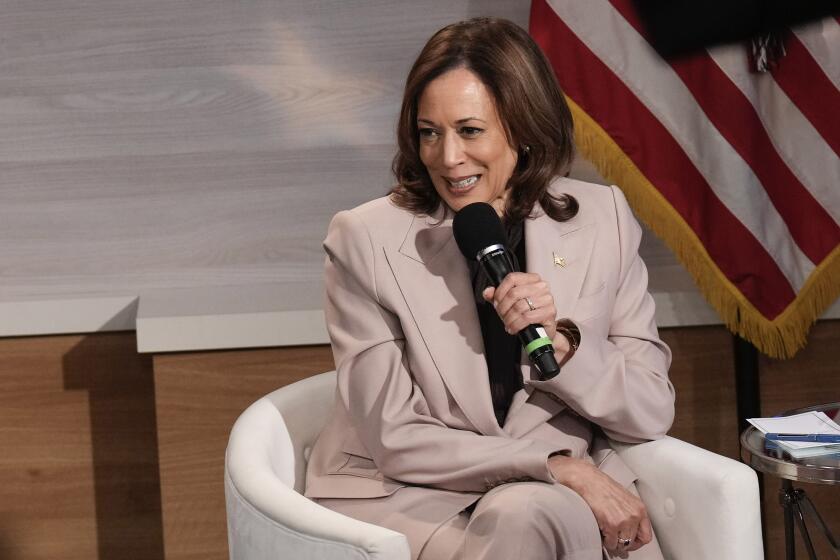Prop. 1D isn’t worth it
Before you decide how to vote on Proposition 1D this month, consider the story of Micah Jacobs.
Micah weighed just 5 pounds at birth, and during his initial weeks of life, he failed to thrive, adding little weight and struggling to breathe because of poorly developed lungs.
In addition to her son’s health problems, his mother, Marilyn, faced another blow: While she was on maternity leave, her job as a mortgage broker was eliminated. Suddenly, she had no income or health benefits -- and skyrocketing medical bills.
In previous decades, Micah might well have fallen through the cracks, becoming yet another child who suffers from poor health, cognitive delays and eventual school failure -- all factors that can impose huge costs on taxpayers.
But he was born after voters approved Proposition 10 in 1998. The ballot measure placed a new tax on cigarettes in order to fund a range of health and education programs for children under 5.
Consequently, Micah’s early health issues triggered so-called First 5 interventions funded by Proposition 10 funds. A clinical nurse was assigned to his case and met weekly with his mother to discuss the family’s needs. The nurse secured a portable machine to aid Micah’s breathing and speed maturation of his lungs, and she provided nutritional supplements that “fattened him up,” according to Marilyn.
By his first birthday, Micah’s wheezing had eased, and his mother began to feel she could go back to work. The cost of child care was temporarily covered, which enabled Marilyn to look for -- and eventually find -- a new job.
These inventive human-scale supports -- setting Micah on a healthy path and coaching Marilyn back to work -- are not simply compassionate. They have already saved taxpayers tens of thousands of dollars, vividly illustrating the benefits of what former Gov. Pete Wilson first advanced in the 1990s as “preventive public policy.”
California voters supported Proposition 10 not simply because it was a humane investment in society’s youngest and most vulnerable members, but also because it made economic sense to invest early and prevent costly problems down the line.
In Los Angeles, First 5 initiatives provide health insurance and pediatric care, along with new preschool slots, for more than 562,000 families. L.A.’s Best Babies Network assures healthier newborns across the county by educating and providing medical care to expectant mothers.
New screening efforts identify infants and toddlers with autism and other disabilities, again reducing downstream costs.
A generation of research in medicine and child development confirms that lifting the health and early learning of young children pays large dividends in the future, lowering rates of childhood asthma and obesity. About half of costly achievement gaps, separating adolescents from poor versus affluent families, can be detected as children enter kindergarten. This suggests that we need to intervene before kindergarten.
President Obama, moving from these scientific findings, is pushing for stronger investments nationwide in child health and high-quality preschools.
But now, the Legislature -- even as other states have moved to emulate California’s preventive strategy -- seeks to reverse the voters’ will in its attempt to patch together a budget deal.
Proposition 1D falsely claims to “protect children’s services funding.” In reality it would raid $1.6 billion from locally run First 5 programs that are making a huge difference in the lives of California families.
Gov. Arnold Schwarzenegger is under enormous pressure to find fat in the state budget. But local budgets to lift families and schools have already been cut to the bone. Moreover, passing Proposition 1D would reduce the state’s current deficit by less than 4%.
We shouldn’t try to balance the state budget on the backs of young children.
More to Read
Get the L.A. Times Politics newsletter
Deeply reported insights into legislation, politics and policy from Sacramento, Washington and beyond. In your inbox three times per week.
You may occasionally receive promotional content from the Los Angeles Times.










